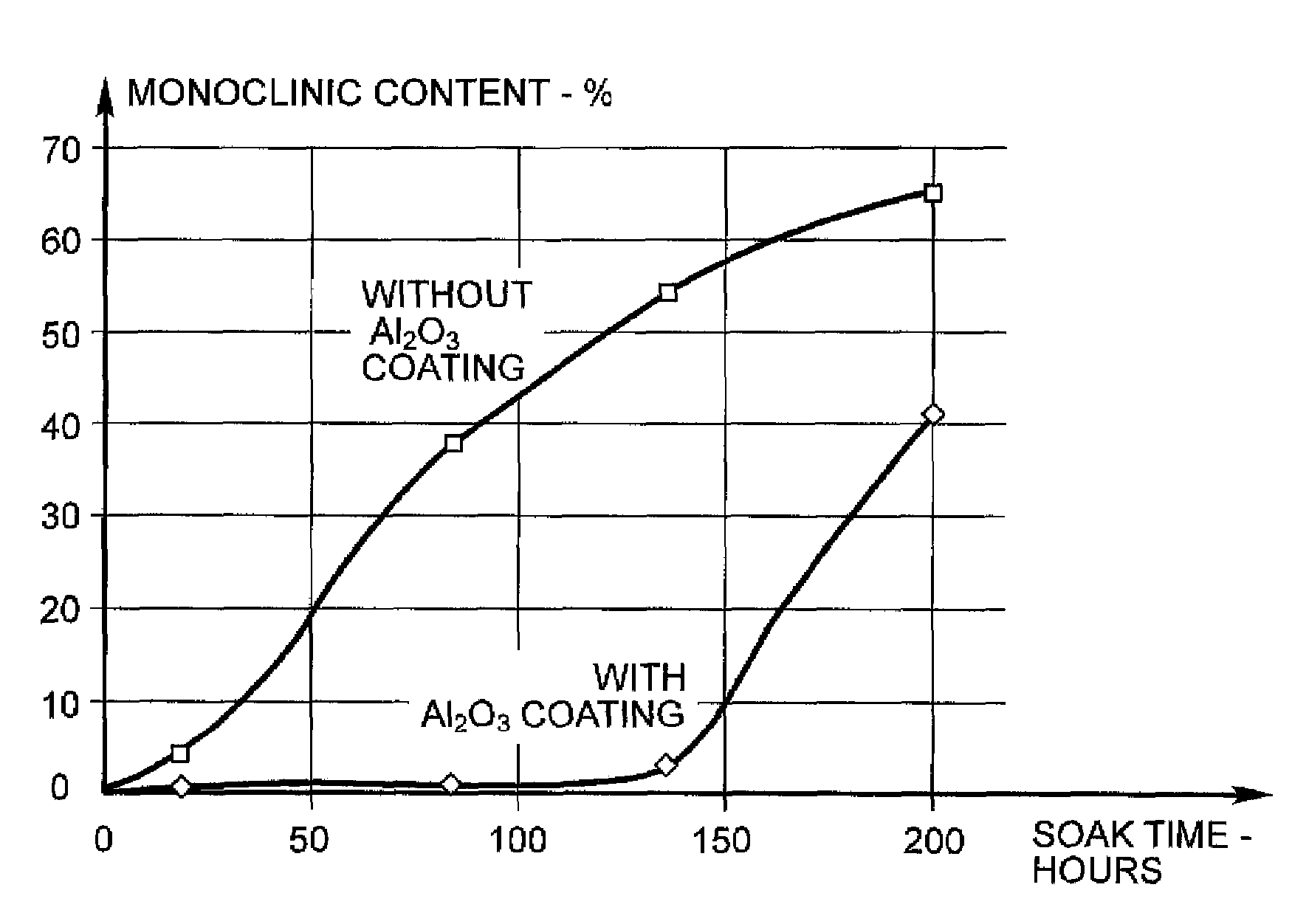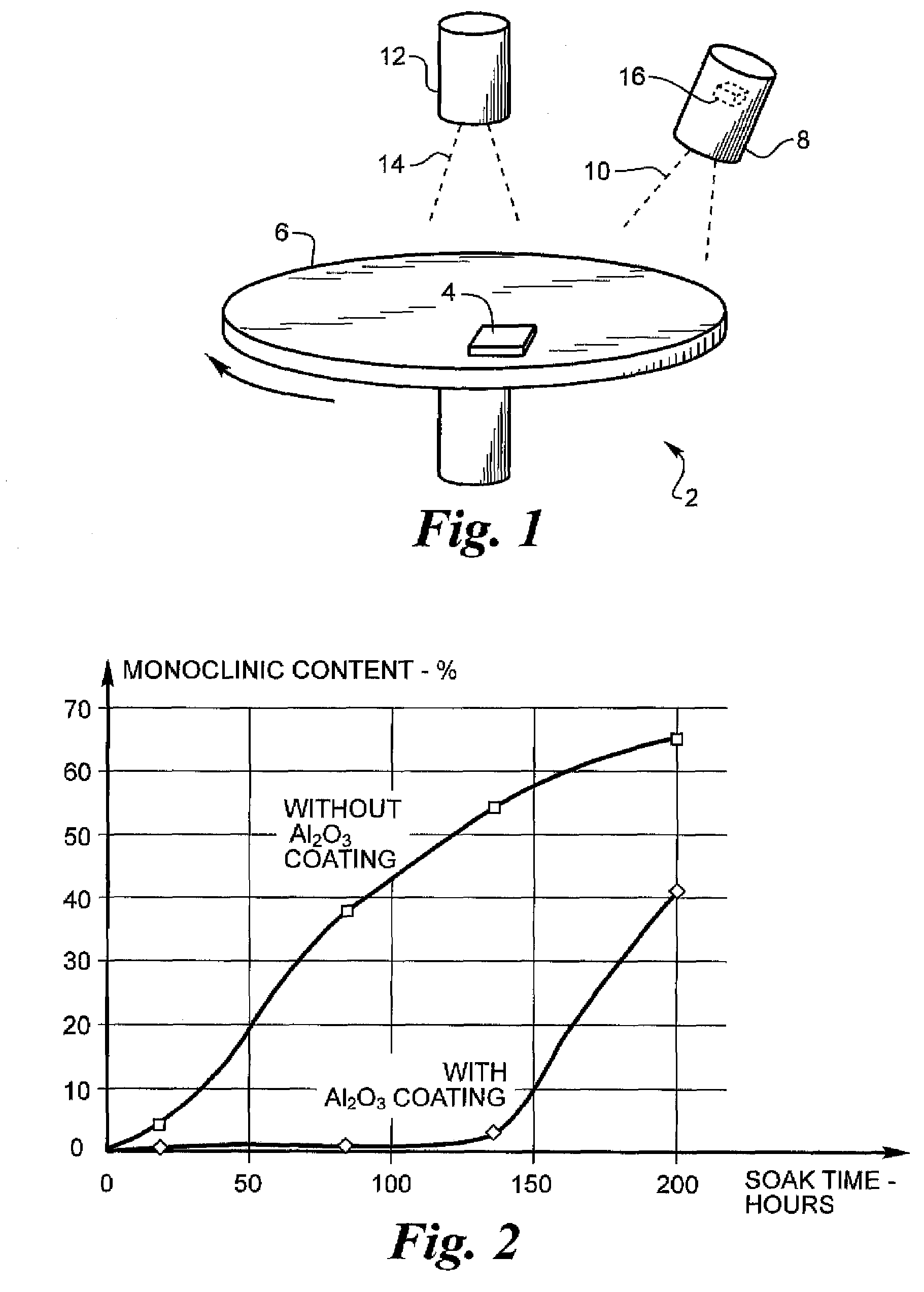Material to prevent low temperature degradation of zirconia
a zirconia and low temperature degradation technology, applied in the field of coating materials, can solve the problems of y-tzp components suffering a decrement in strength properties, tzp demonstrated a significant strength decrement,
- Summary
- Abstract
- Description
- Claims
- Application Information
AI Technical Summary
Benefits of technology
Problems solved by technology
Method used
Image
Examples
example
[0022]The base vacuum level is about 1×10−7 Torr and the working pressure of argon plus oxygen is about 3×10−4 Torr. In a chamber of approximately one gallon in volume, the flow rates to the ion gun 8 of the argon-oxygen mixture about 10 scc / m argon plus 5.5 scc / m oxygen. The flow rates to the IBAD chamber are about 5.5 scc / m oxygen and about 3.5 scc / m of argon.
[0023]The substrate temperature is about 300° C. The electron beam evaporation source is a solid, dense block of single crystal sapphire alumina with a purity of at least about 99.99 atomic percent.
[0024]The deposition rate is about 1.5 angstroms per second at an ion beam bombardment energy of about 1000 eV and an ion beam current of about 26 mA. In alternate embodiments, the film is bombarded with ions from an ion gun with energies typically in the range of 1.0 to 1.5 Kev. As a result, energy is transferred to the coating atoms, allowing them to migrate on the surface, and the coating can grow in a more uniform manner.
[0025]...
PUM
 Login to View More
Login to View More Abstract
Description
Claims
Application Information
 Login to View More
Login to View More - R&D
- Intellectual Property
- Life Sciences
- Materials
- Tech Scout
- Unparalleled Data Quality
- Higher Quality Content
- 60% Fewer Hallucinations
Browse by: Latest US Patents, China's latest patents, Technical Efficacy Thesaurus, Application Domain, Technology Topic, Popular Technical Reports.
© 2025 PatSnap. All rights reserved.Legal|Privacy policy|Modern Slavery Act Transparency Statement|Sitemap|About US| Contact US: help@patsnap.com


